Autumn leaves are a wonderful material not only for making a herbarium, but also for creating unusual compositions and flower bouquets. From maple, birch or rowan leaves you can make beautiful roses that will decorate both the interior and an autumn-themed event.
What leaves are roses made from?
For an autumn bouquet, it is recommended to choose wide, not hard leaves:
- maple;
- linden trees;
- birch trees;
- viburnum;
- chokeberry;
- poplars.
The foliage should be whole, without obvious damage, not dry. The material should be pliable, easily take a new shape. The leaves should be aesthetically beautiful: one or a similar shade of color, so the color scheme of the bouquet should be thought out in advance.
Procurement of natural material
How to make a rose from leaves so that it will last more than one day - prepare the material correctly:
- wash the leaves;
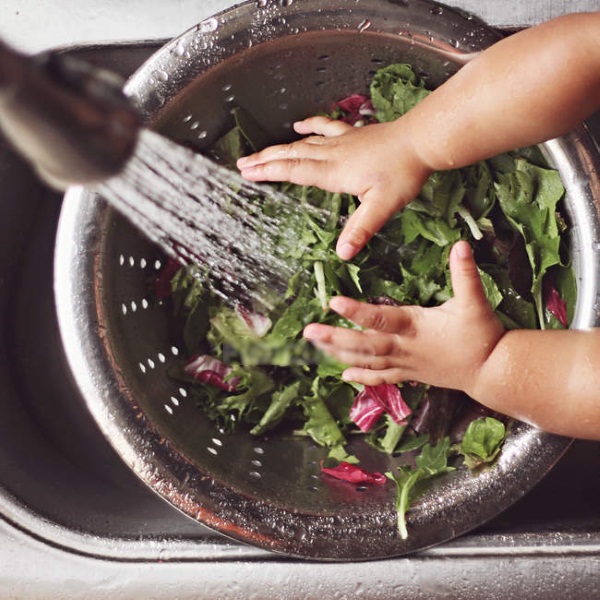
- place on a towel;
- dry it a little to let the excess water drain off.
The main thing is not to overdry the foliage. Otherwise, it will break and deform when creating a rose.
Master class: how to make a rose
Master classes will help you create a rose from maple, birch and chokeberry leaves with your own hands. In addition to the main natural material, you will need strong threads to attach the foliage to the buds. No other special tools are required for this craft.
Please note that any leaves must have stalks.
From maple leaves
For roses, it is better to choose large maple leaves, too small ones will not work. Within one bouquet, the color range of buds may differ, but for one rose, it is recommended to select leaves of the same tone.
Step by step instructions:
- Creating the core. The first sheet is folded horizontally in half, leaving the front side on the outside. It is tightly rolled into a roll and held firmly with fingers, but not secured with anything yet.
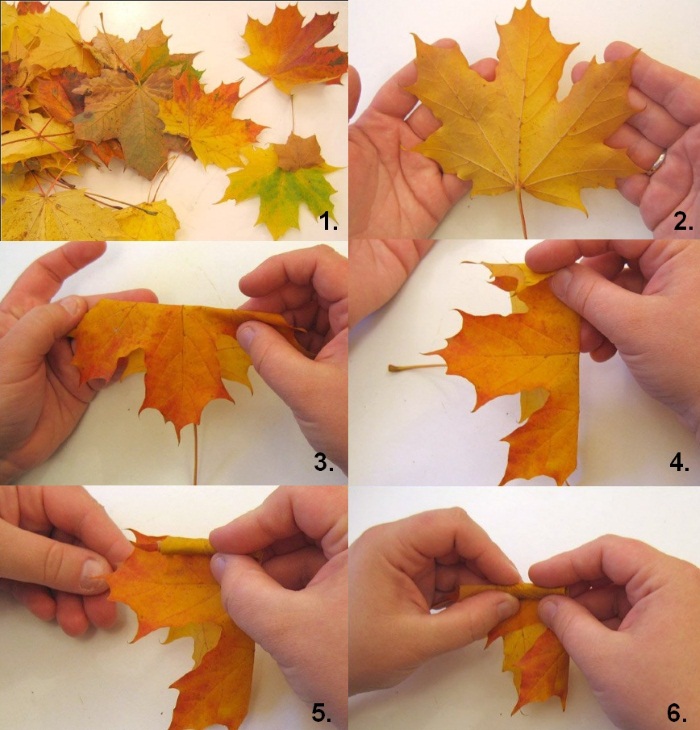
How to make a rose from maple leaves step by step - Creating petals. Place the whole leaf face down on the resulting core. Bend it horizontally so that the stamen is 1–1.5 cm below the fold, and iron it well. Bend the remaining protrusion as well, but do not smooth it out. Wrap the side parts of the maple leaf around the core, as if wrapping it in a blanket. Pinch the remaining edges at the base.
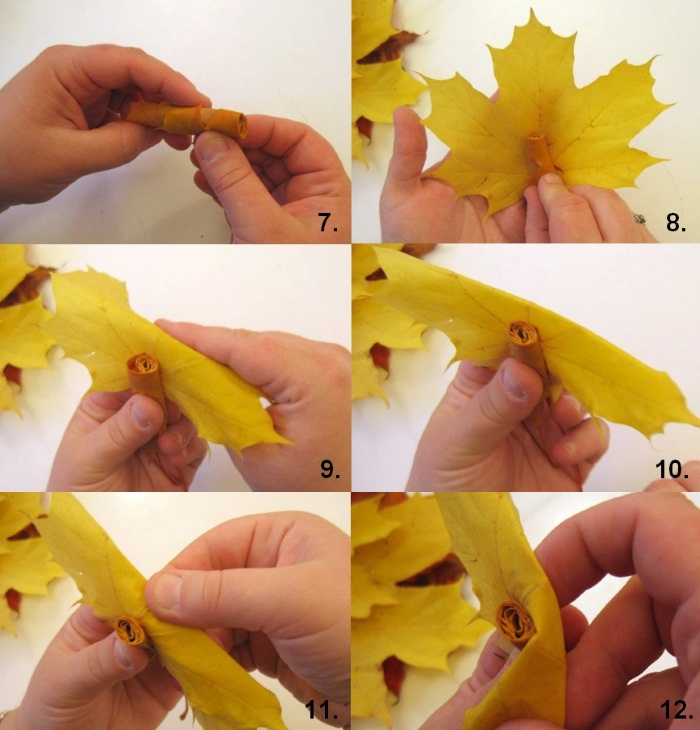
- Creating the second petal. Take another sheet and do the same steps, but place this petal on the opposite side. Fix the petals with a thread at the base.

- Creating a bud. Add the required number of maple leaves until the bud is large enough. The main thing is not to forget to fasten the petals of the future rose with a thread at the base so that the entire bud is strong and does not fall apart.

- The number of buds determines the size of the bouquet. When all the buds are ready, they can be tied with a beautiful ribbon or decorated with maple leaves.
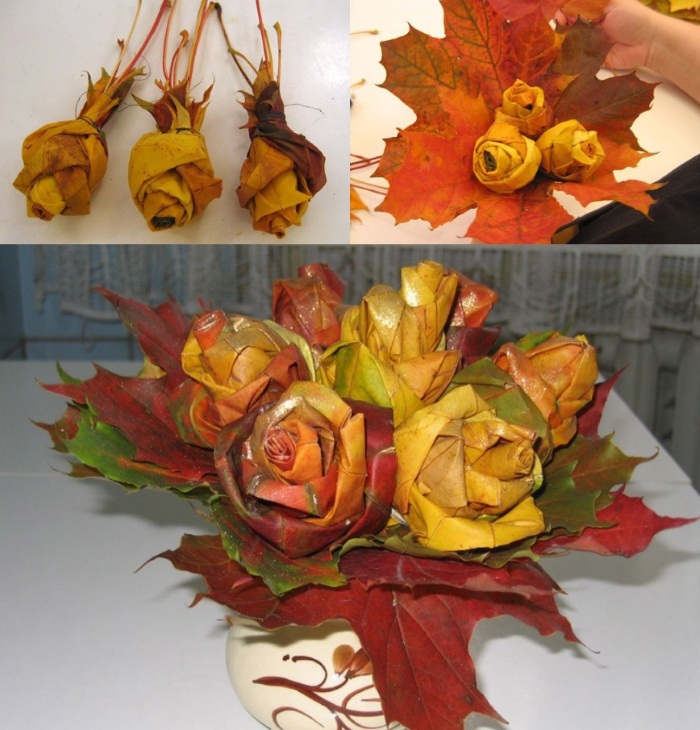
The shape of the wedge leaf allows you to form a flower in another way:
- the core is made as in the previous version;
- take a sheet and fold its central part inward towards the back side;
- wrap this sheet around the core so that the edge of the previous sheet falls into the middle of the next one;
- continue to form the bud until it reaches the desired size;
- The base of the flower is fixed with a thread.
From the leaves of black chokeberry
The leaves of the chokeberry turn red and brown in autumn, so they are suitable for creating bright bouquets. On average, 19 leaves are needed for one bud, but it is better to have a small supply. In addition to the leaves themselves, you will also need a small twig (branch) of the same tree.
How to make a rose from chokeberry leaves:
- Twisting the core. Take a small twig and wrap it with a leaf, face inward. Hold the base of the core with your fingers.
- Creating petals. Take the second leaf and bend it around the stamen, then take the next leaf, gradually forming a bud. The front side of the leaflets faces the core.
- Making a bud. When the flower has reached the desired size, its base is fastened with a thread or wire. The rose petals are bent back, fluffing up the resulting flower.
- The branches located at the base of the core allow you to form a bouquet that can be placed in any convenient container.
From birch leaves
Birch leaves are well suited for creating roses both in shape and structure. For one bud, you will need to collect 7-8 leaves of large, medium and small sizes. The color range of the material should match, while soft yellow leaves will allow you to create original tea-colored roses.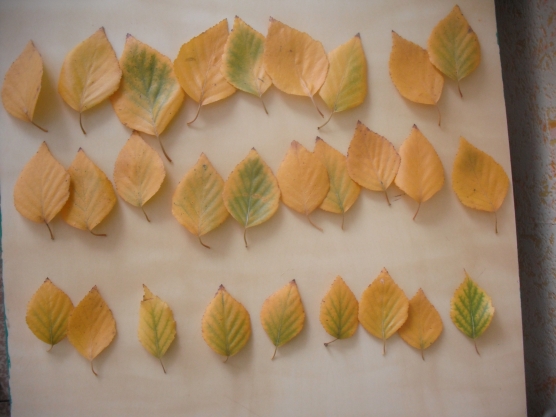
Flower making technology:
- The sharp tip is cut off, giving the leaf a rounded shape.
- Several leaves (4-5) are folded so that one slightly covers the other. They are rolled into a roll - the stamen of the flower.
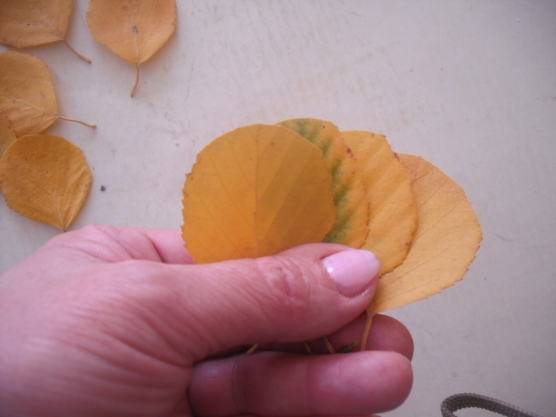
- First small, then medium, then large birch leaves are placed in a circle around the core, with the front side facing inward, thus forming a bud.

- To make the composition strong, the base of the bud is periodically fixed with a thread.
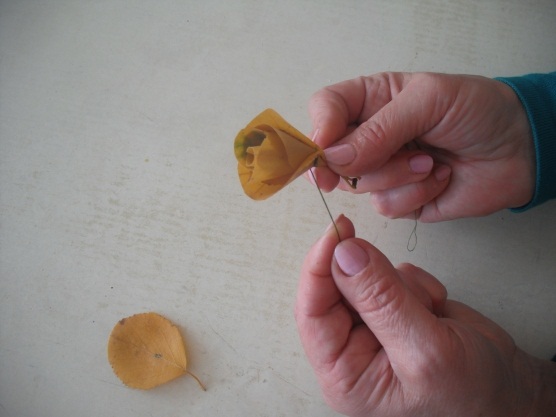
- Finally, the edges of the petals are folded back, giving the flower a more finished and natural look.
- Decorate the rose with any green leaves.
From the leaves of different trees
When autumn has just begun and there is not much yellowed foliage yet, a flower can be made from leaves of different tree species.
To create the composition "Rose in a Pot" you will need the following materials:
- bright, beautiful, preferably large leaves (bindweed, maple, aspen or any other) – 15–20 pcs.;
- green maple leaves – 2 smaller, 3-4 larger;
- juice straw (medium size);
- a twig (branch) with leaves slightly smaller in diameter than the juice tube (the tube should fit on it);
- rubber bands for weaving;
- double-sided tape;
- PVA;
- hairspray;
- rose pot;
- plasticine or modeling clay (to fix the rose);
- earth or ground pine cones.
Step-by-step master class:
- Place the tube on the future stem and measure it to a size that will hold the bud well and not dangle on the branch.
- Take two leaves, cut off the uneven edges to make petals, and wrap them around the tube with the right side facing out. Tuck the edges in so that the hole from the tube is not visible.
- To form the petals, cut off the remaining leaves and apply them to the core with the front side facing inward, so that when you bend the leaflet, its beautiful part is visible. The edges of the future petals are bent.

- Each leaf is fastened with a rubber band for weaving. A bud of the desired size is formed.
- Place a tube with a ready bud on a twig; if the flower does not sit tightly, you can pour PVA into the tube.
- A receptacle is made from green maple leaves. A larger leaf, leaving the upper teeth, is cut into a semicircle at the bottom. The receptacle is attached to the base of the bud with the teeth facing up and secured with a rubber band. A strip with a gradual narrowing is cut from another leaf, secured to tape, and then wrapped around the flower, hiding the rubber band and the uneven protruding edges of the receptacle.
- The finished rose is fixed in any beautiful pot, fixing it with plasticine or modeling clay. The top of the pot is decorated with soil or ground cones.
- The rose and stem are carefully treated with hairspray, which will allow it to retain its original appearance.
Making bouquets from natural materials
The resulting buds can be arranged into beautiful bouquets:
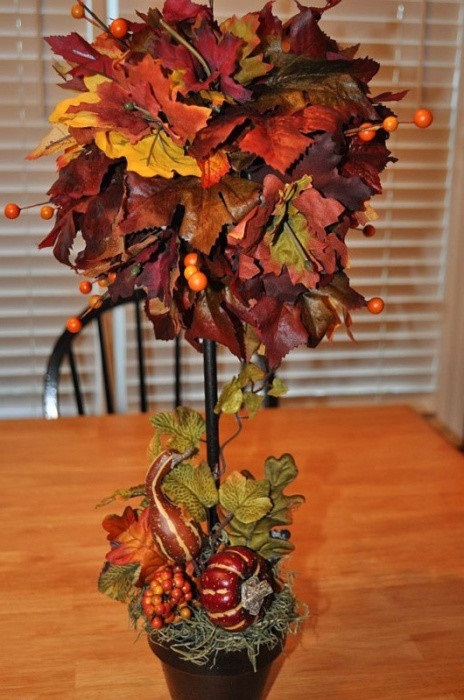
- Maple roses are decorated with large leaves of the same tree, and the color scheme can be the most colorful and differ from the color of the buds. To make the leaves smooth and beautiful, they are ironed, placed between sheets of paper. The prepared leaves are carefully wrapped around the maple buds and fastened at the base with a thread. The place of fixation can be decorated with adhesive or cloth tape of a suitable shade.
- The flower arrangement will look good in a "vase" made of natural material. Half a pumpkin, previously cleaned and dried, or a basket woven from newspaper tubes will do for this. You can complement the arrangement with rowan berries, pine cones, and leaves of other trees.
- If you attach stable cuttings from twigs (branches) to the buds, wrap them with adhesive or cloth tape of a suitable color, then such a bouquet can be placed in an ordinary tall vase, decorating it with branches of asparagus, bergrass or gypsophila.
How to Keep a Leaf Bouquet Attractive
How to make a rose from leaves is described in detail in master classes. There is one more question: how to keep the bouquet fresh, because natural material dries quickly and loses its shape.
The experts share the following recommendations:
- pre-soak the leaves in a solution of water and glycerin in a 2:1 ratio;
- lubricate the finished buds with any vegetable oil, and you can add a drop of your favorite essential oil;
- treat the flowers with acrylic or any other construction varnish; you can use gold or silver spray paint;
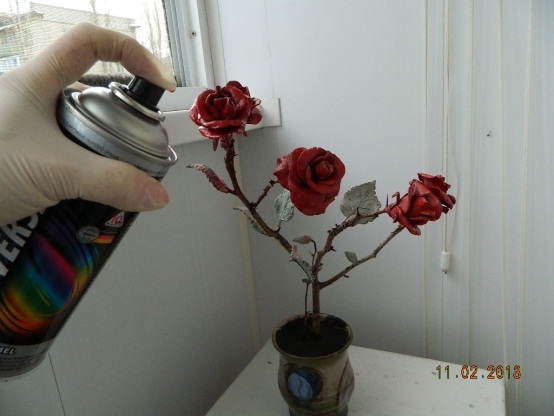
- Spray the flower arrangement generously with hairspray.
Roses can also be made from autumn leaves. Such a bouquet will help decorate the interior of the house or a theme party. The main thing is to choose the right material, choose the technique of execution and turn on your boundless imagination.
Article formatting: Vladimir the Great
Video about making a rose from leaves
Bouquet of roses from maple leaves:
